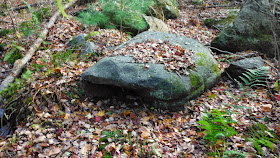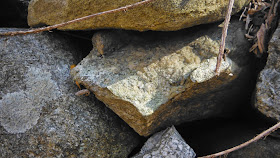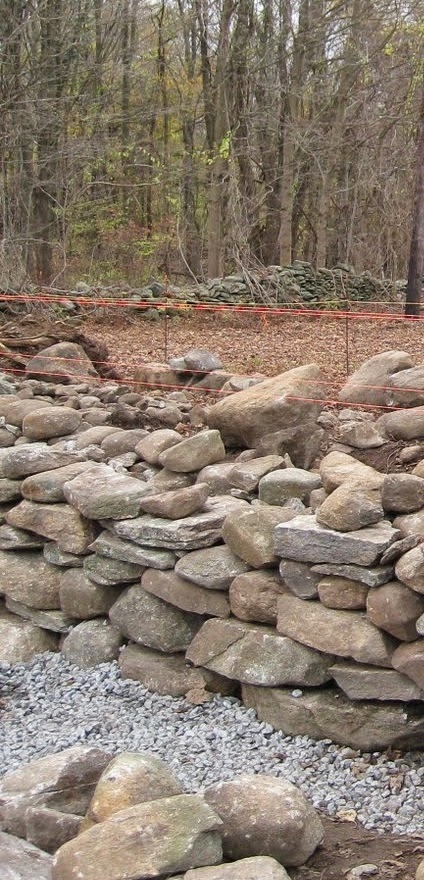It was another “Looking
for Something Else and I Found This” Situation that brought me to someone’s
photos about a 2 day stonewall workshop that involved rebuilding an old “stone
wall.” It happened five years ago and I don’t want to embarrass the people who
participated.
They really didn't understand what that row of stones was,
what it was actually composed of.
They didn't know that it was an Indigenous made stone
construction.
Read just about any book about stone walls and you won’t
find this type of “wall,” actually, properly and technically a “fence,”
described in those books. At best you’ll find it described as a haphazard
collection of stones tossed out of a field and possibly stacked in a double row
in a rather random matter. But I quickly spotted a few details I've seen elsewhere that leads me to believe that there isn't isn’t anything random about it,
excepting that some stones may have been actually added after people began
plowing and clearing the field of stones.
I hypothesize that Indigenous People in what is now known as
New England built miles and miles of what are known as “stone walls.” I’ve been
field observing “stone walls” for over twenty years, that Indigenous-made
perspective in mind, looking for repeated patterns that suggest an Indigenous (Indian
or Native American) origin.
Just as some authorizes say about other rock art in this
region, representations of the turtle and the serpent are probably the most common (Ed
Lenik somewhere or other comes to mind) signatures of Indigenous constructions.
Representations of turtles seem most numerous (and it’s a whole other story
that there are many rows of stones that I interpret as actually being
representations of serpents – petroforms really). I've never kept a count of
exactly how many I've come across and it’s been a learning process as well as I
continue to learn new forms, different patterns…
It took just
seconds to spot a beautiful stone turtle effigy or representation; sometimes I
will enhance a photo to emphasize eyes or a mouth, legs or shell, but I don’t
think I have to in this case:
(Carapace or shell above a headstone looking sideways toward the camera, a dark crystal of the reptile's right eye, a vien of dark minerals in the stone recall a mouth and two forelegs.)
Another obvious testudinate effigy included in this row
of stones, triangular headstone at the nuchal notch of a carapace stone (and is that a rather rhomboidal xenolith just above the notch?):
A (red?) possibly quartzite turtle head stone with well defined eye peeking out from the far side:
A view of the rebuilt wall with an older row of stones in the distance:
(Note the "wave" in the older construction, a wave not unlike the rims of some Indigenous Ceramic Pottery found in the NE that I and others have observed in many "stone walls.")
Another view of the finished stone fence:
(To the left of the finished fence, a stone with the suggestion of eyes, another with a "vee" to suggest a turtle beak, another pattern that occurs often in other stones observed over the years:)

















































